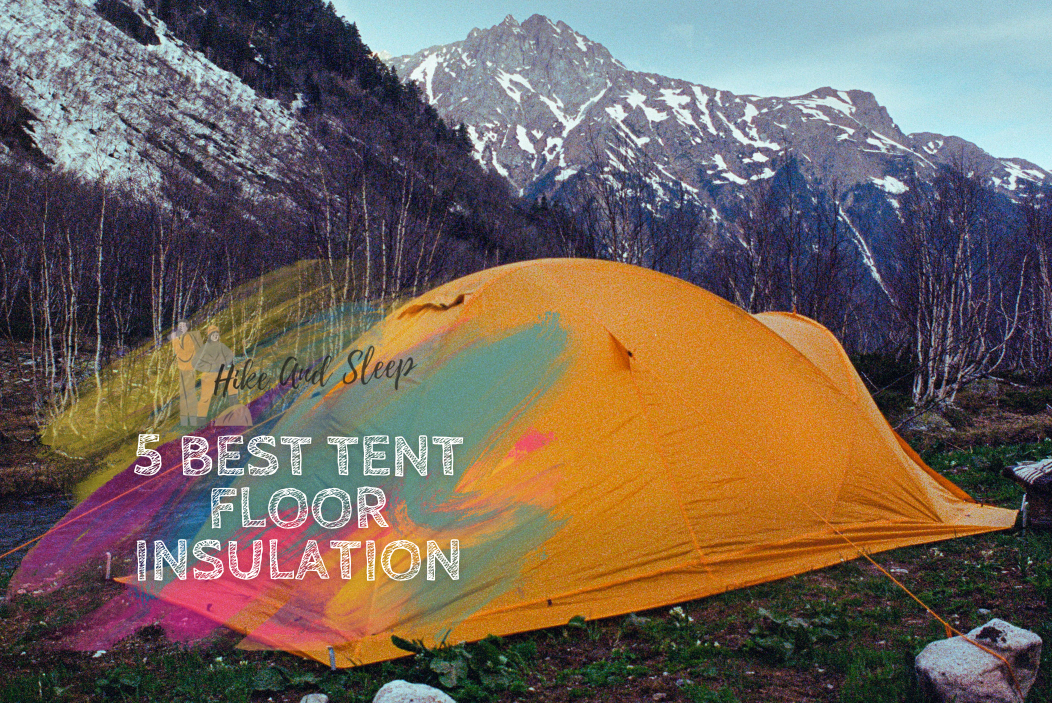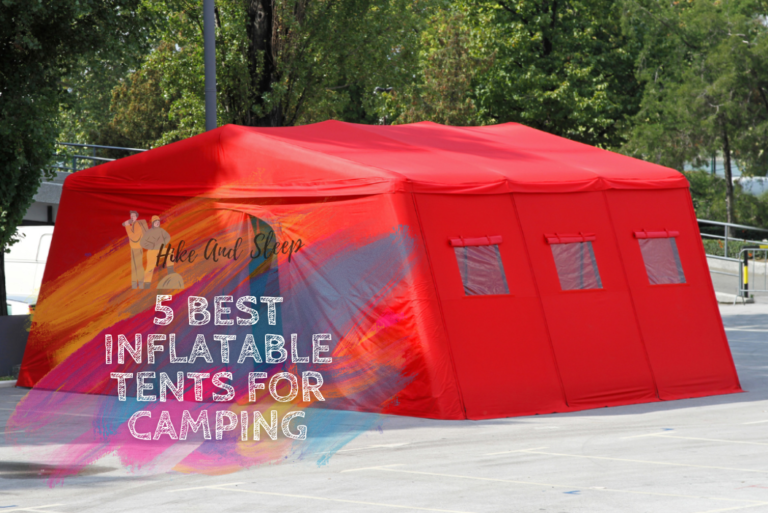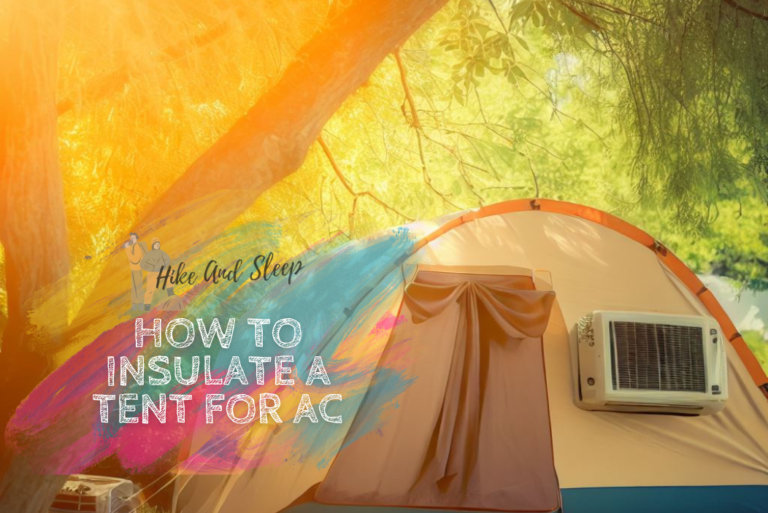The Ultimate Guide to Insulating Your Tent Floor: Top Recommendations
When it comes to camping, the thrill of sleeping under the stars can be both exhilarating and soothing. However, amidst the excitement, there’s a small but crucial detail that often gets overlooked – insulating your tent floor. This humble yet mighty task can significantly impact your camping experience.
Imagine this: You’re out in the wilderness, the night’s chill is creeping in, and you’re trying to catch some Z’s on a cold, unforgiving ground. That’s where tent floor insulation swoops in as your camping hero.
In this blog post, we’re going to dive into the why’s and how’s of tent floor insulation. We’ll explain why it’s so important, and trust us, it’s not just about keeping you warm. A well-insulated tent floor can also save you from unexpected moisture seeping through, making your camping adventure not just comfortable but safer too.
And here’s the exciting part – we’ll be sharing some of our top recommendations for the best ways to insulate your tent floor. So, whether you’re a seasoned camper or just starting out, stick around because a cozy, comfy night’s sleep is on the horizon!

Table of Contents
Why is Tent Floor Insulation Important?
Camping outdoors in the wild doesn’t mean you have to shiver through the night or wake up in a soggy sleeping bag. Here’s giving some thought to why tent floor insulation is essential:
Temperature Regulation: Mother Nature can be quite the thermostat-tweaker. Insulating your tent floor helps keep you warm when it’s chilly and cool when it’s hot outside. It’s like giving your tent a cozy blanket.
Moisture Control: The ground can be surprisingly wet, even on dry days. Insulation acts as a barrier, preventing moisture from seeping in and turning your tent into a mini swimming pool. Dry campers are happy campers.
Comfort: A smooth, insulated floor is a ticket to a good night’s sleep. It cushions those rocky lumps and annoying bumps, so you wake up refreshed and ready for another day of adventure.
Protection from Uneven Terrain: Nature doesn’t always lay out a plush carpet for your tent. Insulation evens out the playing field, so you’re not tossing and turning on lumpy ground. It’s like having your own level, comfy oasis in the wild.
Types of Tent Floor Insulation
When it comes to insulating your tent floor, you’ve got options – and knowing them can make a world of difference in your camping comfort. Let’s break down the materials and their pros and cons:
1. Foam Pads:
These are the trusty workhorses of tent insulation. Foam pads are lightweight, affordable, and provide excellent insulation. They create a comfortable barrier between you and the ground, preventing heat loss and offering cushioning. However, they can be bulkier to carry and less comfortable than some alternatives.
2. Inflatable Sleeping Pads:
Think of these as the air mattresses of the camping world, but much more rugged. Inflatable sleeping pads are compact when deflated and provide great insulation. They offer a softer, more cushioned feel compared to foam pads. However, they can be punctured, so you’ll want to bring a repair kit just in case.
3. Insulated Tent Footprints:
These are like two birds with one stone. They protect your tent’s bottom from wear and tear while providing insulation. They’re super easy to clean, making them ideal for muddy or wet conditions. However, they might not offer as much padding as foam or inflatable pads.
Recommended Read:
- Best Inflatable Tents For Camping
- Electric Heated Blankets For Camping
- Ozark Trail 6-Person Tent Review
How to Insulate Your Tent Floor
You’ve got your insulation materials ready, now it’s time to put them to good use. Insulating your tent floor doesn’t have to be rocket science. Here’s a simple step-by-step guide to ensure you’re snug as a bug in a rug:
1. Clear the Area: Before you do anything else, make sure your tent site is clean as a whistle. Remove any stray sticks, rocks, or anything pointy that could poke through your insulation.
2. Lay a Ground Tarp: A ground tarp is your tent’s best friend. It acts as an extra layer of protection against moisture and sharp objects. Lay it flat on the ground, and you’re already one step ahead in the insulation game.
3. Choose and Place Insulation: Now comes the fun part. Lay out your chosen insulation material evenly over the ground tarp. Make sure it covers the entire tent floor area. If you’ve got multiple pieces, overlap or interlock them like a puzzle to create a seamless, insulated surface.
4. Secure the Edges: Use stakes or clips to keep your insulation in place. You don’t want it slipping and sliding around during the night, so secure those edges to keep things cozy.
5. Test for Comfort: Before you settle in, give it a quick test. Sit and lie down to make sure it’s comfortable and even. Adjust as needed until you’re satisfied. You can also learn to build a tent pad on your own.
5 Best Tent Insulation Recommendations
For insulating your tent floor, the right gear can make all the difference between a chilly night’s sleep and cozy camping bliss. Here are some top insulation products that will keep you snug as a bug:
1. Magma – Thermal Floor Padding
- Color: Red
- Compatible with: Spider (aka Hover), and other manufacturer’s Stingray, Vista
- Thickness: 2cm
- Material: Polyester filling and outer
- Weight: Approx. 1.5kg/4lbs
- Packed size: 50x20x20cm/20x8x8inch
- Highlight: Camp below freezing in comfort! This cozy thermal floor provides an extra layer of insulation where it’s needed most, ensuring a comfortable and warm night’s sleep. Plus, it expands your camping season without adding too much bulk or weight.
2. CAPTAIN STAG Tent Floor Mat Floor Sheet
- Size used: (approx.) 2600 x 2600 x 7 mm thick
- Storage size: (approx.) Outer diameter 35 x length 68 cm
- Weight: (approx.) 2.1kg
- Material: Cover / Nylon, Inside / Polyurethane Foam
- Highlight: This mat offers exceptional comfort and durability. It’s designed to fit most tents and is perfect for creating a cozy camping space.
3. Drymate Tent Carpet Mat
- Keeps You Warm & Dry: This waterproof-backed mat prevents moisture from seeping through to your tent, keeping you warm and dry.
- Carpet-Like Material: Soft and comfortable to walk and sleep on, this mat adds a cozy touch to your tent and protects the floor from damage.
- Durable & Trimmable: Easily cut to fit any space without fraying. It’s multi-functional and easy to clean, making it a versatile investment.
4. BalanceFrom Puzzle Exercise Mat
- Versatile & Cost-Effective: Originally they are exercise mats but you can be creative. These lightweight puzzle pieces provide excellent insulation. They are easy to assemble, water-resistant, and ideal for various uses, including camping. They cover 24 square feet, giving you plenty of coverage.
5. EKTOS Military Wool Blanket
- Warmest Blanket: This wool camping blanket traps body heat, even when wet, and is breathable and temperature-regulating.
- Indoor or Outdoor: Ideal for camping, hunting, or survival gear, it’s large enough for two adults.
- Easy Care: Machine washable and comes with a reusable storage pouch. The upgraded quality ensures softness and durability.
Tips for Maintaining Tent Floor Insulation
Great, you’ve chosen your tent floor insulation, and you’re all set for some fantastic camping adventures. But to ensure it lasts and continues to provide maximum comfort, you’ll need to show it a little TLC. Here are some easy-peasy tips for keeping your insulation in top shape:
Cleaning and Storage Tips:
- Regular Cleaning: Sweep off dirt and debris after each camping trip. For more thorough cleaning, use a damp cloth or sponge. Avoid harsh chemicals that could damage the insulation material.
- Drying: If your insulation gets wet during camping, make sure to dry it completely before storing it. Moisture can lead to mold and mildew.
- Storage: Store your insulation in a cool, dry place. Keep it away from direct sunlight, as prolonged exposure can degrade some materials.
How to Patch Minor Damage:
Small tears or punctures can happen, especially with inflatable pads. Most come with repair kits. Follow the manufacturer’s instructions to patch up any damage promptly. If you don’t have a kit, contact the manufacturer for guidance.
When to Replace Insulation:
No insulation lasts forever. Over time, it can lose its effectiveness. Keep an eye out for signs like flattened or compressed padding, cracks in foam, or loss of inflation in air pads. If your insulation is no longer providing the comfort and insulation you need, it might be time for an upgrade.
Additional Considerations
Camping isn’t a one-size-fits-all adventure. Depending on the season, your companions (your furry friends), and your gear preferences, you might need to tweak your tent floor insulation strategy. Here are some additional considerations:
Winter Camping
Winter camping can be a magical experience, but it also requires extra insulation. Opt for thicker and more insulated materials like closed-cell foam pads or air mattresses with a high R-value. Remember, the ground can be icy cold, so don’t skimp on warmth.
Camping with Pets
If your four-legged buddy is joining you on your camping trip, consider their comfort too. Dogs, for example, might appreciate an extra layer of padding or a dedicated pet-friendly tent pad. Also, keep an eye on their claws to prevent accidental damage to your insulation.

Ultralight Backpacking
For the minimalist backpackers, weight and space are crucial considerations. Look for lightweight, compact insulation options that won’t add bulk to your backpack. Inflatable pads and lightweight foam options are popular among ultralight enthusiasts.
Remember, the best insulation choice depends on your specific camping scenario, so consider these additional factors to ensure your camping experience is not just comfortable but tailored to your unique needs and preferences.
Conclusion
In the grand adventure of camping, a cozy night’s sleep can be your best friend. We’ve explored the importance of proper tent floor insulation and dived into some excellent recommendations to ensure you stay warm, dry, and comfortable in your tent.
Remember, tent floor insulation is more than just a luxury; it’s a necessity for any camper. It regulates temperature, keeps moisture at bay, and cushions you from uneven terrain. Whether you choose a foam pad or a specialized tent footprint, the right insulation can make your camping experience infinitely better.
Now that you’ve got the lowdown on tent floor insulation, it’s time to put this knowledge into action. On your next camping trip, apply these tips and recommendations to create your personal oasis in the wild. And don’t forget to share your experiences with us in the comments below! We’d love to hear about your cozy camping adventures and answer any questions you may have.
So, here’s to nights filled with starry skies, the sounds of nature, and the warm embrace of well-insulated tent floors. Happy camping, fellow adventurers!







